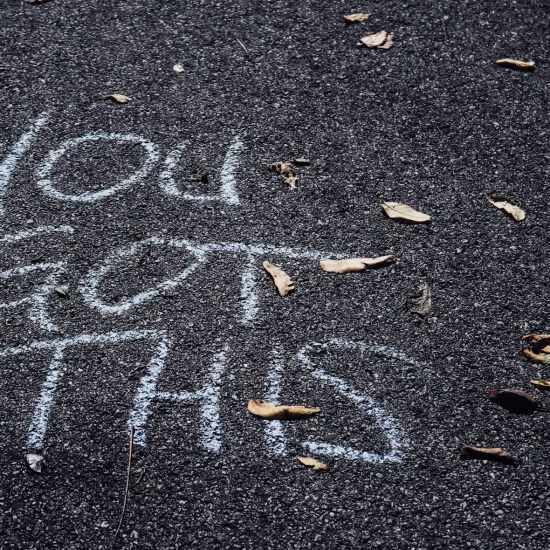
Rumi poet, Hafiz, wrote, “The words you speak become the house you live in” to emphasize the power of the words we use and the energy, beliefs, and practices that those words actualize in our daily lives. What if we applied Hafiz’s quotation to our classrooms and asked, “Do the words you speak become the classroom you learn in?”
What if we gathered all of the words that we said to and about each and every student and floated them above the heads of the students we teach into individual and collective word clouds? What would that collection of describers look like? Sound like? Feel like? Would those word clouds look the same or different for individual students? Unfortunately, the word clouds for many students might be full of deficit-based words that could generate unproductive beliefs and learning experiences. What can we all do in the classroom to highlight students’ strengths and not their deficits? How can we avoid talking about their gaps and where they’ve fallen behind? Could we orchestrate a turnaround? Yes we can!
Teaching with a strengths-based mindset can be challenging because we have been taught to identify and eliminate student thinking that doesn’t align with our expectations. Rather than viewing our goals from this perspective, let’s consider five strengths-based Teaching Turnaround practices that can shift our mindsets so that we develop the knowledge that promotes a positive and productive learning environment filled with resources that can illuminate our students’ strengths and showcase their brilliance.
Teaching Turnaround One: Identify Your Teaching Strengths
Through a process-oriented protocol based on the theory of appreciative inquiry, we can engage in discovering our own strengths by answering particular questions about our teaching.
Think about a peak experience when students were engaged in learning:
- What was happening?
- How was this experience meaningful, energizing, engaging, and valuable to you and your students?
- What are the things you value most about yourself in this experience?
Teaching Turnaround Two: Discover and Leverage Your Students’ Strengths
Next, we need to discover our students’ strengths by carefully observing to uncover and record the moments when each and every one of your students shine and by asking students, “What are you good at in______?” Remarkably, once we hone our strengths-based observation skills, we find that the strengths spotting multiplies.
We also can challenge our own deficit-based statements and beliefs about students by developing alternate beliefs to explain students’ learning challenges. For example, we might say, “She is doing the best she can” which, at first glance, comes across as caring. But upon reflection, the underlying belief is that the student can’t learn more. We can do a turnaround by stating, “She can learn math. We just need to find an entry point into her learning through the use of visual representations. That’s one of her strengths.”
Teaching Turnaround Three: Design Instruction from a Strengths-Based Perspective
Using a strengths’ perspective when designing your lesson focuses on cultivating your strengths as well as your students’ strengths. These lessons are situated within students’ interests (e. g., sports, gaming, movies) or funds of knowledge (e. g., cultural knowledge, family and community experiences), include multiple opportunities for students to work together, and promote problem-solving and critical thinking skills. For example, a teacher learned that nearly all of her students participated in a community yard sale. The students were feverishly working at home to prepare for the event by making food and pricing donated items. The teacher launched two weeks of newly designed mathematics lessons. Students used mathematics to determine best buys, area and perimeter to organize the tables, and showcased their strengths in handling the money.
Help Students Develop their Points of Power
John Dewey (1938) wrote that “the purpose of education is to allow each individual to come into full possession of his or her personal power” (p. 10), an idea that resonates with this particular teaching turnaround. A point of power (POP) is “that ‘something’ that the students do well in [a particular content area] and they can not only state but rely upon when they face a novel challenge or problem” (Kobett & Karp, 2020 p. 177). Students may initially need help discovering their own points of power, but you can strategically identify ways for students to recognize their strengths using prompts such as, “I used to ____ , but now I _____.” For example, third graders learning mathematics wrote, “I used to give up when I didn’t know how to solve the problem right away, but now I keep trying different strategies!”
Promote Strengths Across the School Community
School leaders can support our work as teachers by highlighting our strengths, and thus, creating a collective efficacy of empowered teachers. School communities are stronger when all stakeholders feel valued which occurs when they have multiple opportunities to contribute their talents. First, leaders must make a concerted effort to engage us in solving educational problems by focusing on and leveraging the school community’s successes. Understanding success through a deliberate dissection of the factors that produced it often reveal epiphanies that a problem centered approach cannot divulge.







Skapa personligt konto / June 2, 2025
Your article helped me a lot, is there any more related content? Thanks!
/
Linda Ann Crider / May 4, 2020
I registered for the Strength Based Mathematics/5 Teaching Turnarounds Webinar my AP referred me to with you but never got an email with a link; I thought I just needed to click the link in the email but it just brought up this article. Did I do something wrong?
I’m in Dalton, Ga so that’s 3:30 p.m. your time, correct?
Thanks
/